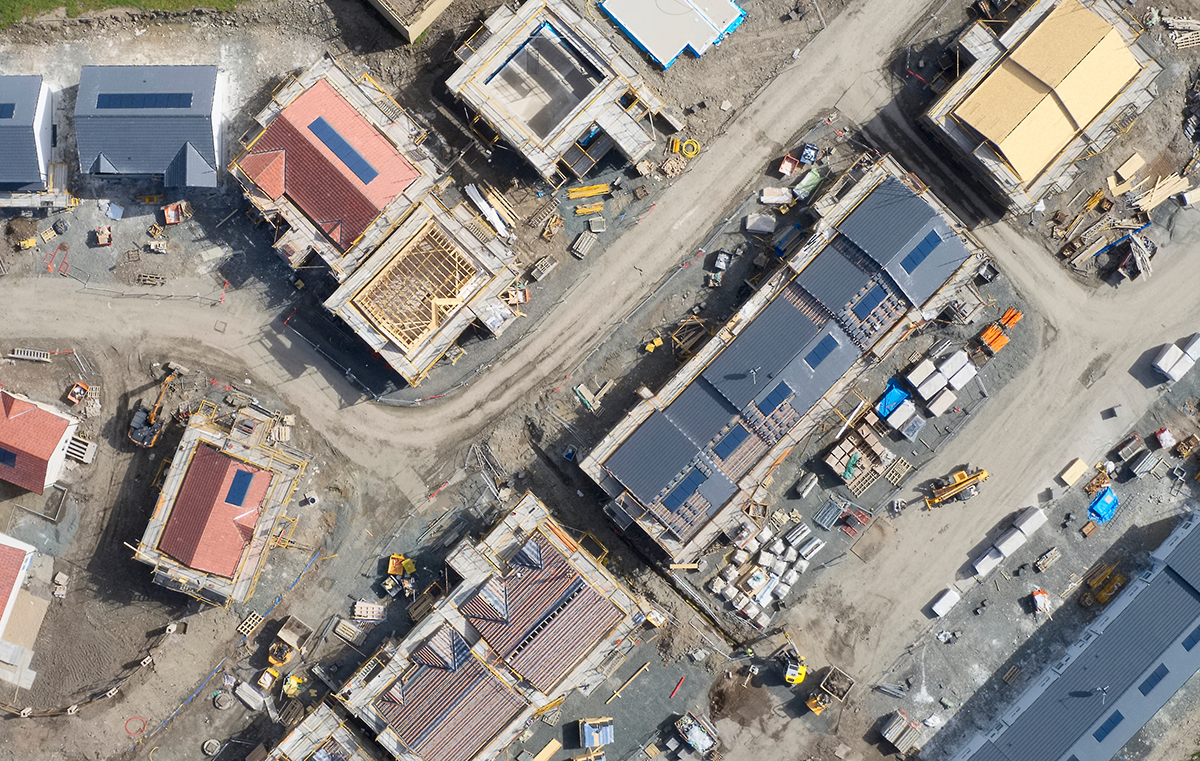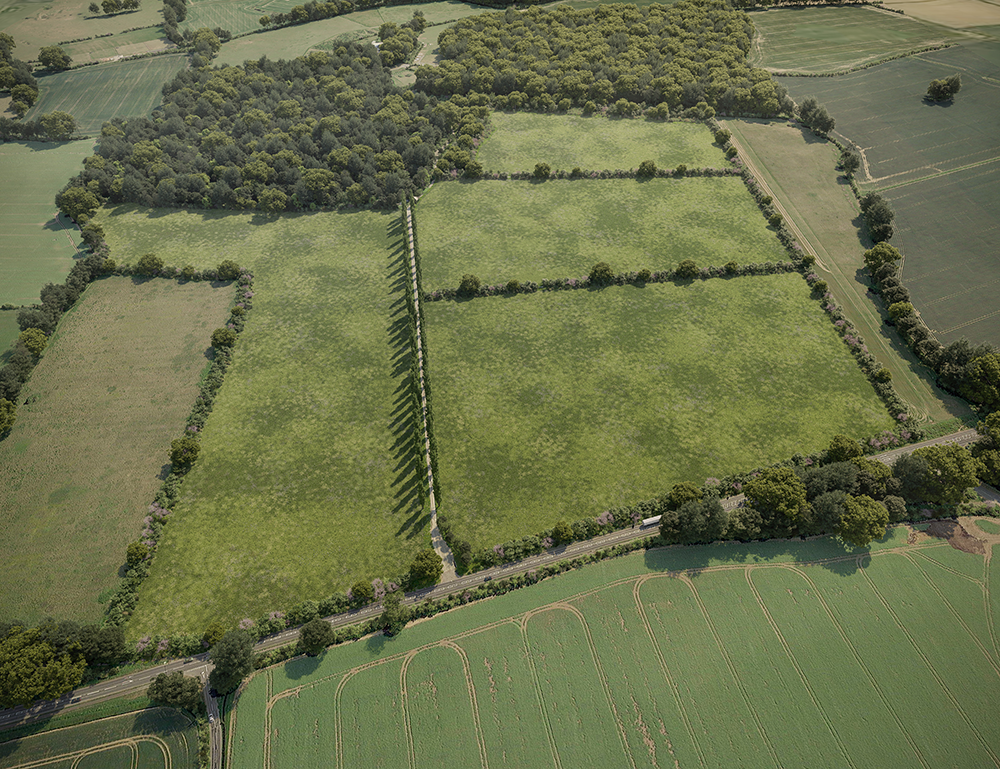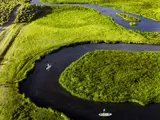Biodiversity Net Gain (BNG) is a strategy designed to mitigate the environmental damage of development and ensure that nature is left in a better state than it was found.
To be legally mandated on all new planning permissions at the end of January 2024, developers must deliver at least 10% biodiversity net gain on all new developments in England with few exceptions.
Environment Bank provides high-integrity Biodiversity Units to enable developers to meet their BNG obligations and provide diversification of income to landowners and farmers through Habitat Bank creation.

Following the Biodiversity Net Gain mitigation hierarchy
To reduce initial biodiversity loss as much as possible, the National Planning Policy Framework (NPPF) compels developers to adhere to a ‘mitigation hierarchy’ in their BNG delivery options.
Biodiversity loss from developments must first be avoided as much as possible and then any impact should be appropriately mitigated on-site. When on-site mitigation is impossible or poses a threat to project viability, developers can purchase Biodiversity Units to compensate off-site from providers such as Environment Bank.
Biodiversity Units
Environment Bank is establishing an expanding network of Habitat Banks across England, raising the high-integrity Biodiversity Units that will satisfy stringent Biodiversity Net Gain planning requirements for developers.
Significantly, our Habitat Banks are fully funded for their full lifetime. This includes the cost of capital works, habitat management, ecological monitoring, and detailed reporting. Our ecologists design each site in collaboration with the local planning authority (LPA), maximising the Habitat Bank’s contribution to local nature recovery strategies (LNRSs).
Our Habitat Banks are landscape scale, strategically located in areas of ecological importance, including a mosaic of habitats to meet off-site development biodiversity requirements in line with demand.
Habitat Banks are typically established on low-yielding land to avoid any impacts to food security. We are providing vital long-term income security for rural landowners through secure annual land leases and management payments – welcomed by landowners experiencing financial uncertainty in the wake of reduced government subsidies.
Spatial Risk Multiplier
The biodiversity metric used to measure BNG does not penalise the purchase of Biodiversity Units within the same LPA area or National Character Area (NCA) as the development site.
When local delivery options are unavailable, developers can purchase Biodiversity Units beyond the LPA/NCA, though they will be required to deliver additional biodiversity gains as a penalty for non-local delivery.
'Cross-boundary’ delivery from an adjacent LPA/NCA requires an additional 50% biodiversity uplift, and delivery beyond an adjacent LPA/NCA requires an additional 100% uplift.
When all other options have been exhausted, developers can purchase statutory biodiversity credits from the government, with these being punitively priced and incurring the same +100% spatial risk multiplier as any other delivery beyond an adjacent LPA/NCA.
Our nationwide network of Habitat Banks significantly reduces the need for cross-boundary delivery by providing off-site Biodiversity Units from Habitat Banks local to the development, ensuing the associated benefits remain local.

The benefits of off-site delivery
On-site BNG delivery is carried out on the development site itself while off-site delivery occurs anywhere beyond its red line boundary. Fully delivering Biodiversity Net Gain on-site is often unachievable – with habitat establishment typically impractical and adequate maintenance virtually impossible.
If a s106 agreement or conservation covenant needs to be placed on a development site to lock in its status as an area for Biodiversity Net Gain, the purpose of this area cannot change for the legally mandated 30-year period as required by the Environment Act 2021. This means that developable areas can be significantly restricted by on-site delivery, with future adaptability no longer feasible.
Removing the pressure for on-site Biodiversity Net Gain delivery also ensures that green spaces on-site are free to use for recreation and amenities which do not contribute to BNG, such as allotments, playing fields, and flower gardens.
Off-site BNG delivery therefore creates protected havens for nature where it can thrive while also giving developers far more freedom on-site – resulting in the best solutions for developers, local communities, and the environment.
Finding a trusted provider of Biodiversity Units
Thanks to the abundant benefits they offer for developers, ecosystems, and communities – off-site Biodiversity Units are a prudent choice for development projects.
The key for developers is to distinguish between the credible providers that can be trusted to design and deliver a biodiversity gain plan for the full, legally mandated 30-year term and those that cannot. If you find a trusted provider who can offer reliable, high-quality Units locally, LPAs will be far more likely to grant your project planning permission.
At Environment Bank, our team of field ecologists, RTPI planners, and legal experts are setting the gold standard in habitat creation and providing access to high-integrity Biodiversity Units nationwide. We are establishing an expanding network of the highest quality Habitat Banks across England – with funding for these sites already secured for their entire lifetime.
We provide end-to-end Biodiversity Net Gain planning support to ensure our Biodiversity Units demonstrate the long-term ecological outcomes that your planning officer will accept. Environment Bank is taking vast strides towards unlocking truly sustainable development and tackling the existential threat of biodiversity loss.
To find out the cost and availability of Biodiversity Units for your development projects, please complete our Biodiversity Unit request form.
If you are a landowner or farmer and would like to speak with us about co-creating a Habitat Bank on your land, please complete our land registry form.
Find out the cost and availability of Biodiversity Units for your development



